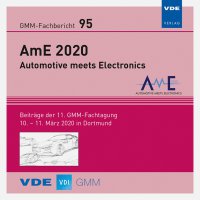Phase relation for the signaling from an Automotive Ethernet 100BASE-T1 communication system
Konferenz: AmE 2020 – Automotive meets Electronics - 11. GMM-Fachtagung
10.03.2020 - 11.03.2020 in Dortmund, Deutschland
Tagungsband: AmE 2020 – Automotive meets Electronics
Seiten: 6Sprache: EnglischTyp: PDF
Autoren:
Panholzer, Emanuel (Daimler AG, Sindelfingen, Germany & University of the Federal Armed Forces Munich, Neubiberg, Germany)
Aidam, Martin; Franz, Walter (Daimler AG, Sindelfingen, Germany)
Lindenmeier, Stefan (University of the Federal Armed Forces Munich, Neubiberg, Germany)
Inhalt:
In the automotive industry the customer demand for higher safety and comfort leads to an increasing number of electrical devices in the vehicle. Therefore, a trend from the classical bus systems (e.g. CAN: controller area network) to commercial point-to-point (P2P) wide band communication systems, which are adopted to the automotive environment (e.g. Automotive Ethernet 100BASE-T1 and 1000BASE-T1), can be observed. These new communication systems are based on a full duplex communication and therefore signal transmission is taking place in both directions (bidirectional). As both signals contribute to the electromagnetic emission from the Ethernet link, the phase relation from the bidirectional signaling is required. Further, the differential mode signal (via mode conversion from the communication channel) and the common mode signal from the ECU contribute to the electromagnetic emission of the communication system. Therefore, the phase relation of these signal modes is also necessary, in order to safeguard the Ethernet system in terms of EMC. In this work, two measurement test setups are introduced in order to determine the corresponding time domain signal and calculate the phase relations via FFT, which allows the determination of the phase relations from all signals and signal modes from an Automotive Ethernet communication link.


